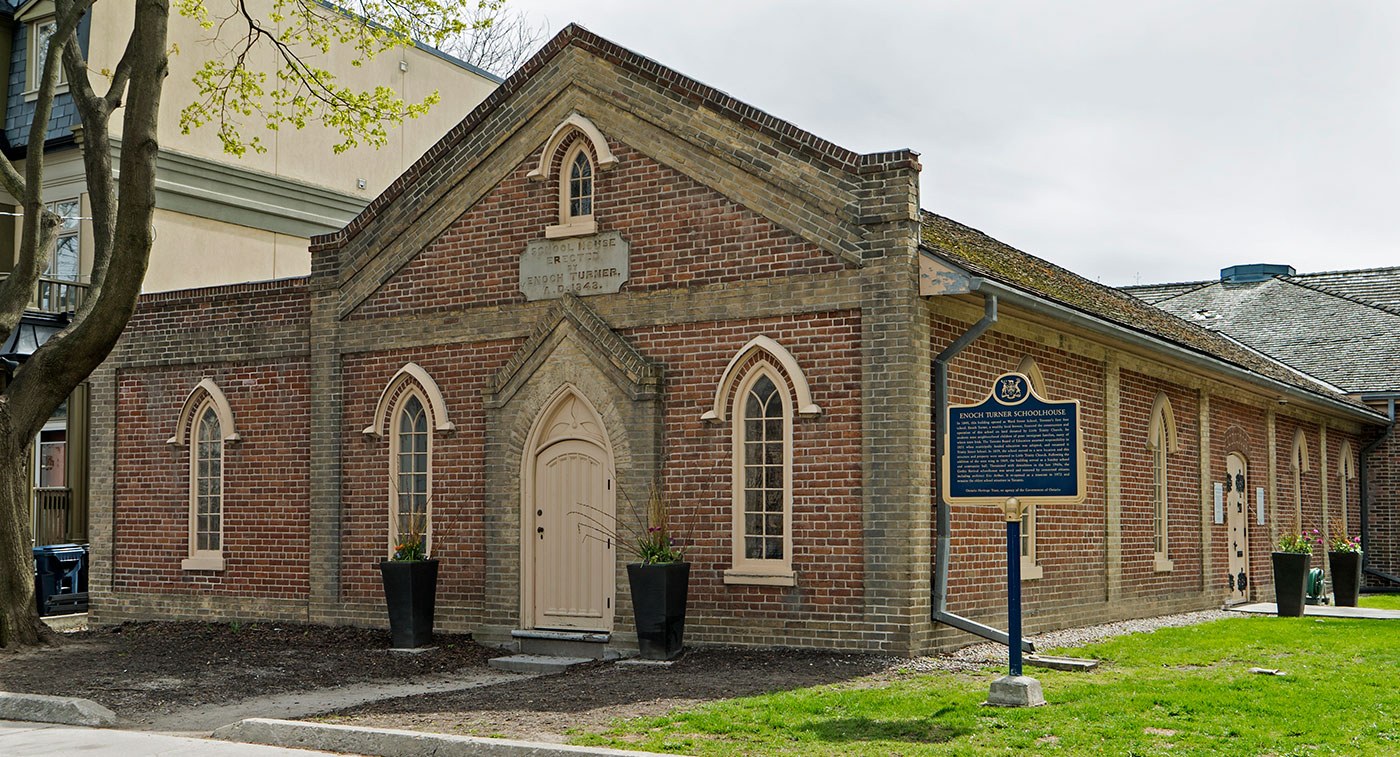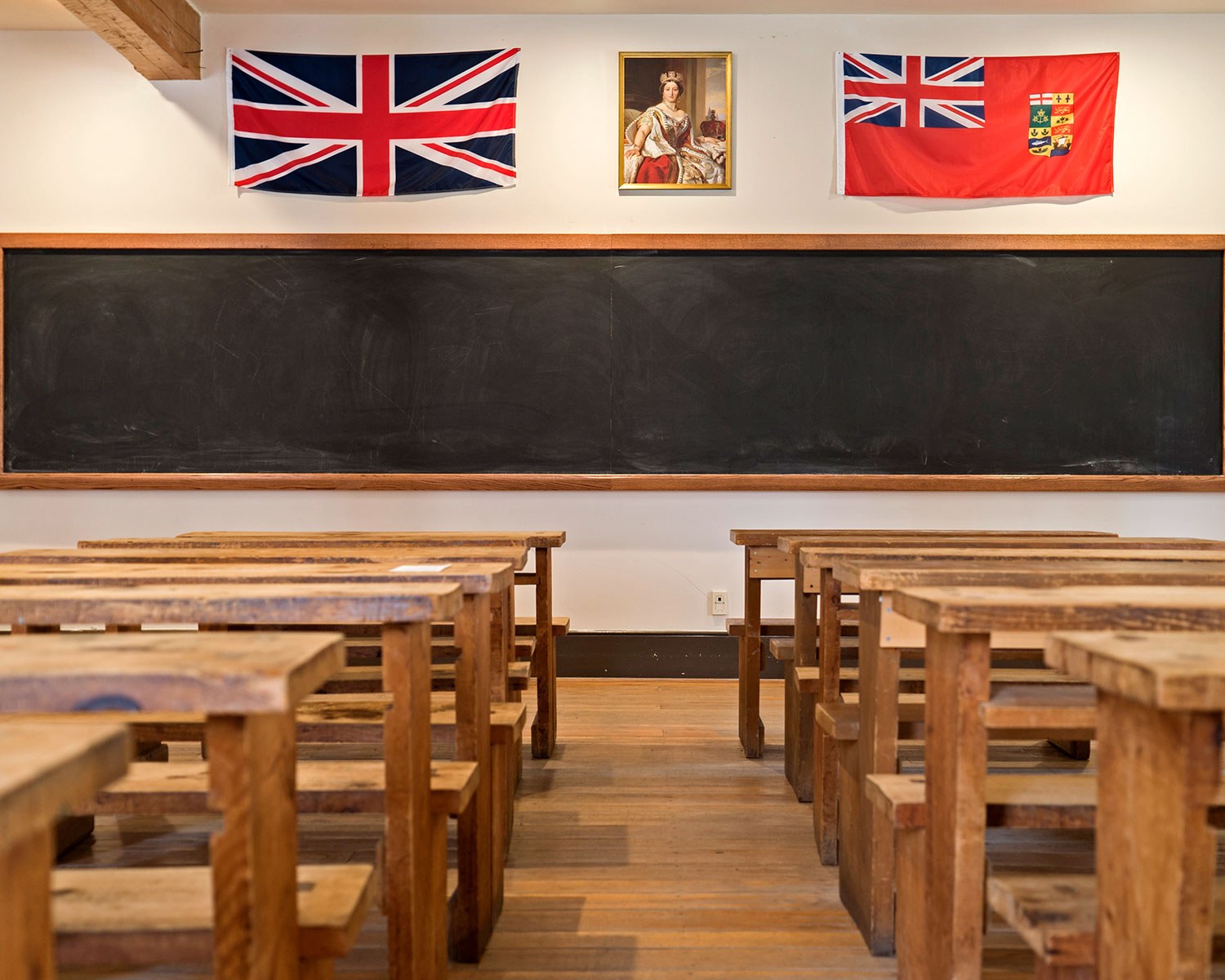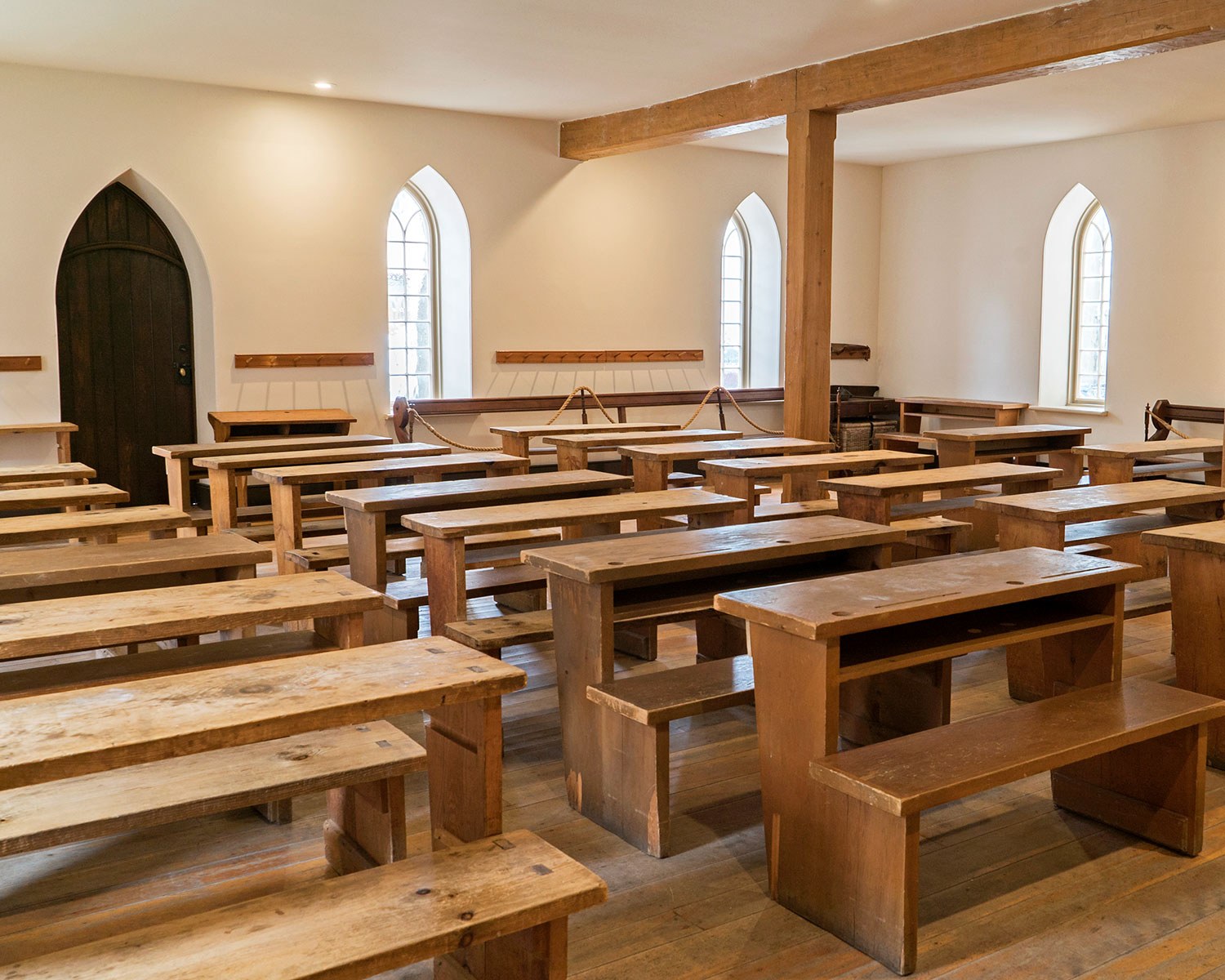Enoch Turner Schoolhouse
Toronto's Enoch Turner Schoolhouse is a provincially significant heritage site and the oldest school still standing in Toronto. Today, this historical property is a public museum and a conference and special events venue.

Street address:
106 Trinity Street
Toronto, Ontario
Telephone:
416-327-6997
Email:
enochturner@heritagetrust.on.ca
Parking:
Parking available on King Street East (metered), Power Street (pay-and-display lot), Trinity Street south of Eastern Avenue (Green P parking lot) and on Mill Street at Parliament Street (pay-and-display lot)
Transit:
Easily reached by public transit (#504 streetcar from King and Broadview subway stations, exit at the Trinity Street stop).
********************
Learn more about the provincial plaque commemorating Enoch Turner Schoolhouse.
This site is owned by the Ontario Heritage Trust but is operated by a partner.
Check out these videos!
Host your next wedding or special event at this beautiful historical site.
The original one-room school was established in 1848 by Enoch Turner (1792-1866), a wealthy brewer and philanthropist, to educate the children in the poor neighbourhood surrounding his brewery. Because many of the area's immigrant families were from County Cork in Ireland, the neighbourhood became known as Corktown — a nickname it still carries today.
Turner supplied funds to construct the Schoolhouse and the land was donated by the adjacent Little Trinity Church. In 1849, the school opened with space for 240 pupils and Turner paid for its operation for three years. It was the first free school in Toronto.
The design of the one-storey Gothic revival-style brick schoolhouse is attributed to architect Henry Bowyer Lane (1817-78). In 1869, the building was expanded to the west with an addition designed by noted Toronto architectural firm Gundry and Langley. The addition is a particularly early work by Henry Langley, who opened his own practice that same year, following the death of Thomas Gundry. Langley went on to become one of the most influential 19th-century architects in Ontario, designing important Toronto landmarks such as the Metropolitan United Church (56 Queen Street East), McMaster Hall (273 Bloor Street West) and the Bank of British North America (49 Yonge Street).
Enoch Turner founded his free school following the Common Schools Act of 1847. After the act was passed, municipalities had the power to raise funds for public education through taxation. City officials, however, were unwilling to introduce such taxes and, as a result, all schools that benefited from any kind of public support were closed for a year. This prompted Turner to establish the Schoolhouse, which was as a critical catalyst in the development of a provincially supported free school system.
In 1850, school trustees were elected by the public to oversee educational funding. Free public education officially began in 1851, transferring the school to the city. In 1859, the school and property were returned to Little Trinity parish, and from the 1860s to the 1960s the Schoolhouse served as a parish hall and Sunday school for the church. By the late 1960s, the Schoolhouse had fallen into disrepair and was threatened with demolition.
To protect the schoolhouse and raise funds for its restoration, the Enoch Turner Schoolhouse Foundation was established in 1971. After extensive interior and exterior renovations, the Schoolhouse opened as a living history site and conference and reception centre. In March 2008, the ownership and operation of the Schoolhouse were transferred to the Ontario Heritage Trust from the Foundation. The Enoch Turner Schoolhouse Foundation continues as an independent charitable organization, working with the Trust to support the programming and operation of the Schoolhouse.


Groups
For a pre-booked tour of the site lasting 20-30 minutes, the price is $5 per participant (these tours are intended for adult visitors and focus on the area and site history).
School tours
Most programs last 60 minutes or less and are free for most students. Please contact us to ask about program pricing. Details of programming include:
In Mrs. Henderson’s class (Most popular!). Experience the classroom rules and the responsibilities of a Victorian school child through a lively re-enactment of a morning at an 1858 Toronto school. Then compare with school today. Students will learn arithmetic, spelling, history and geography under the guidance of our strict schoolmistress Mrs. Henderson. Ideal for students aged 6-11.
Dancing and Decorum in 19th-century Ontario. Students discover the importance of dance as a social activity in 19th-century society, as well as the emphasis placed on behaviour and etiquette – through the popular music of Victorian Toronto. During the lesson, each class will learn the “Sir Roger de Coverley,” an English country dance, and get a taste of Victorian social life. Ideal for students aged 6-11.
Settling in the city: Immigrants in early modern Toronto. Learn about the men, women and children who moved to Canada 100 years ago, and how they helped create a new, modern country. Ideal for students aged 10-13.
Settling in the city: Walking tour. Explore the historic Corktown neighbourhood, visiting sites that were significant to Toronto’s immigrant population and industrial growth in the early 20th century. Ideal for students aged 10-13.
Victorian childhood. What was it like growing up as a child in an industrial city? Students learn what toys children in Corktown would have played with, and will take part in traditional Victorian games. Ideal for students aged 6-11.
